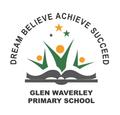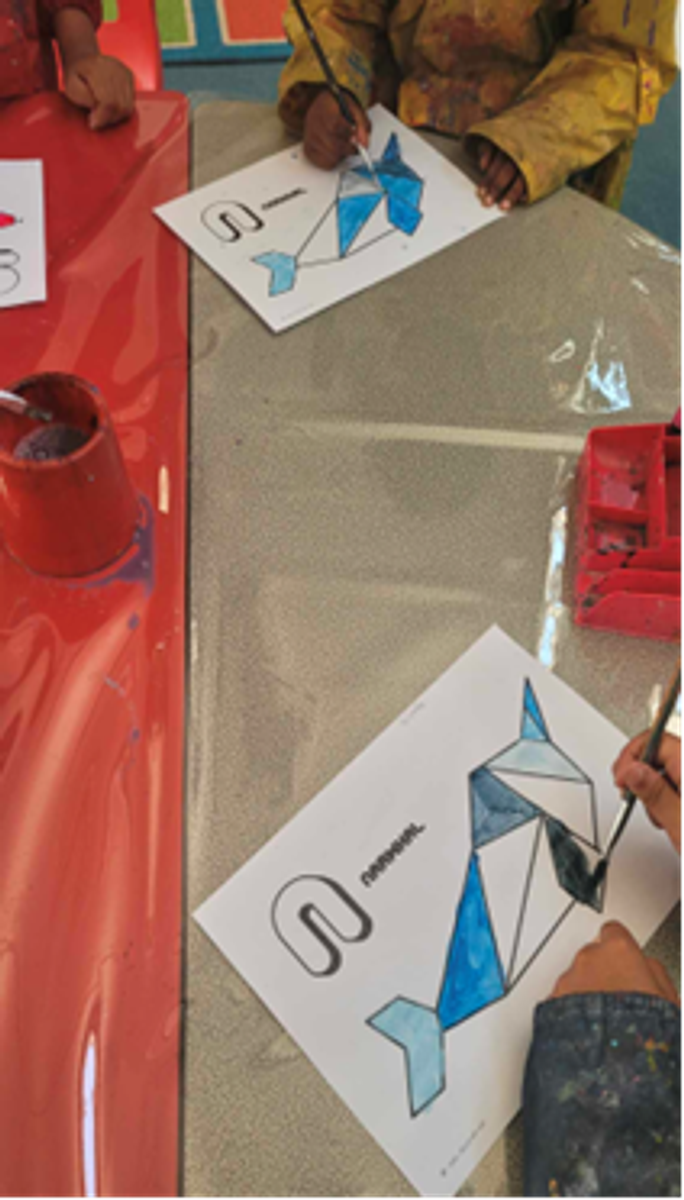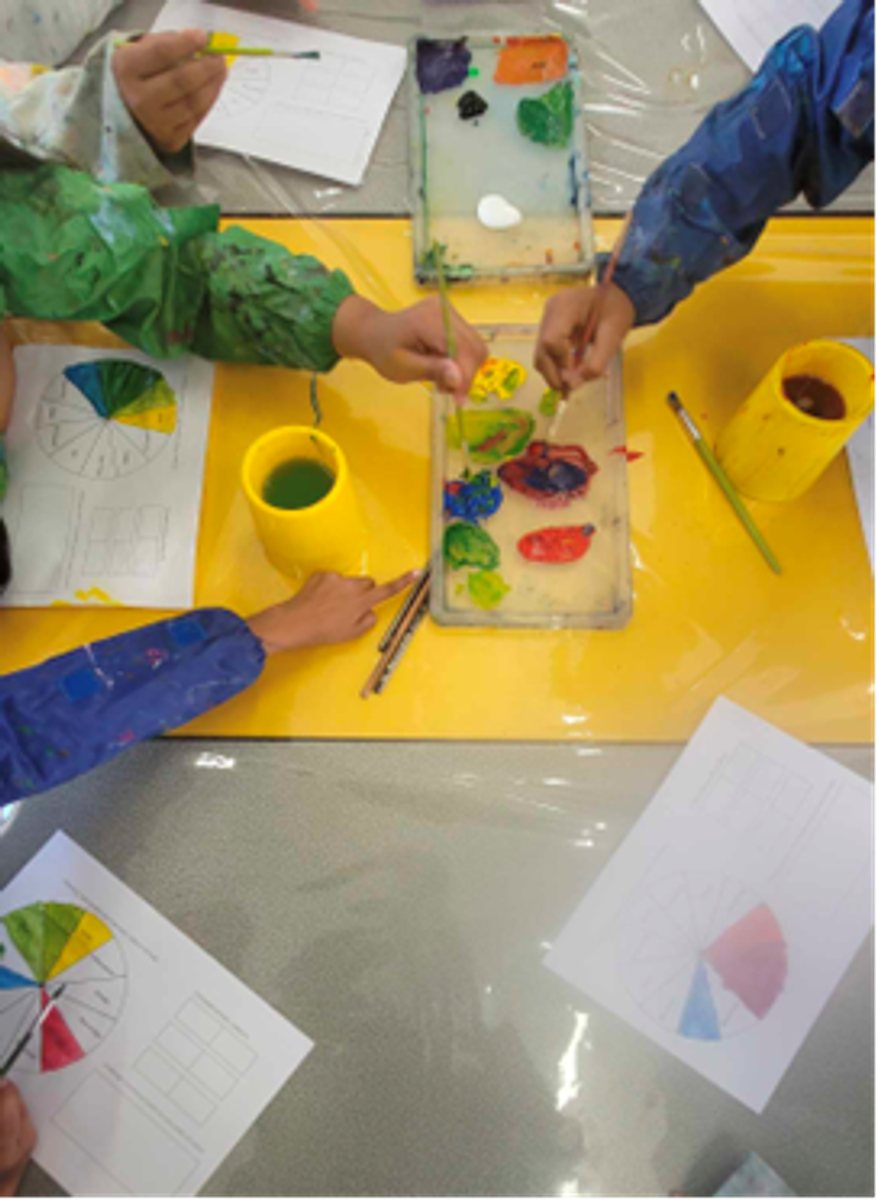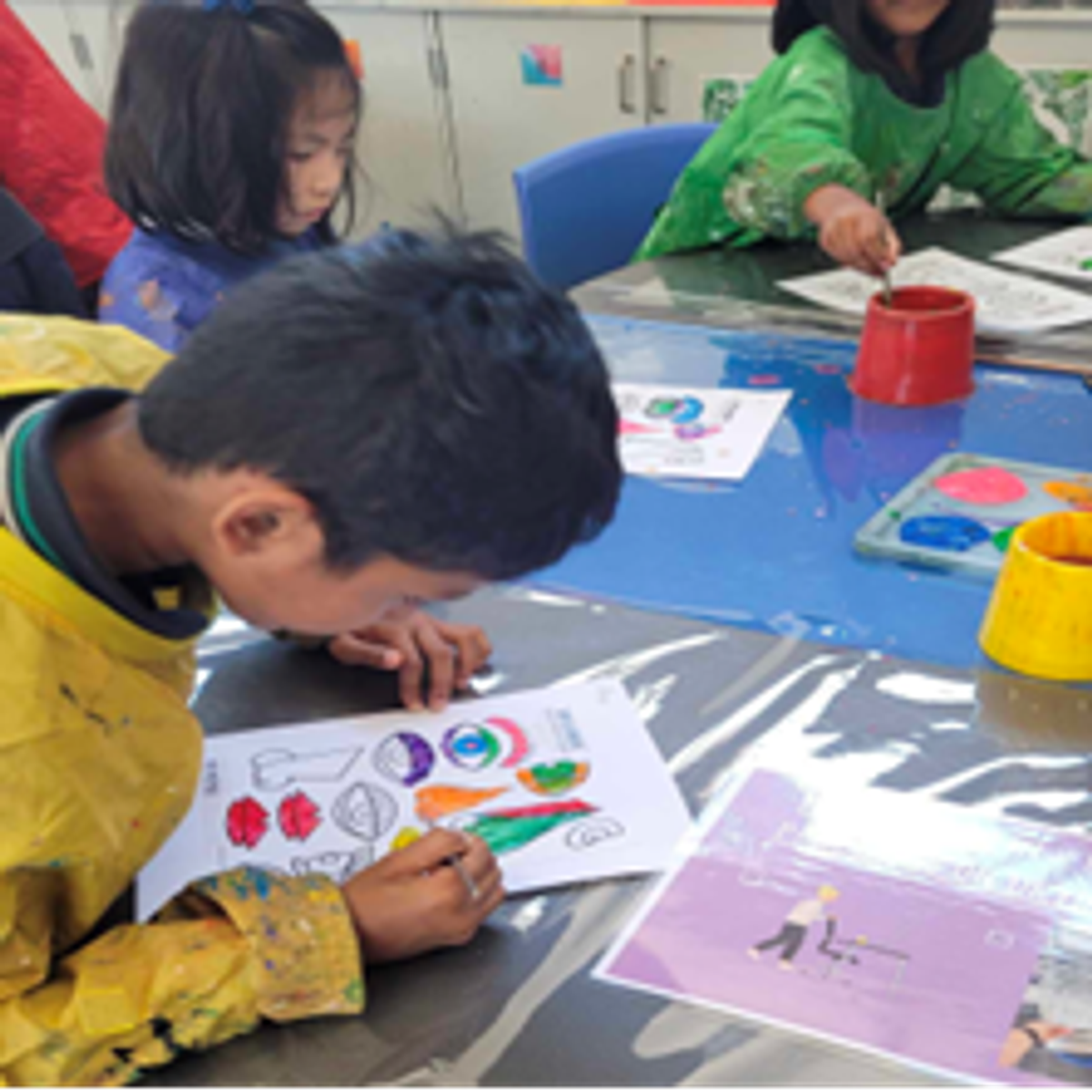Art
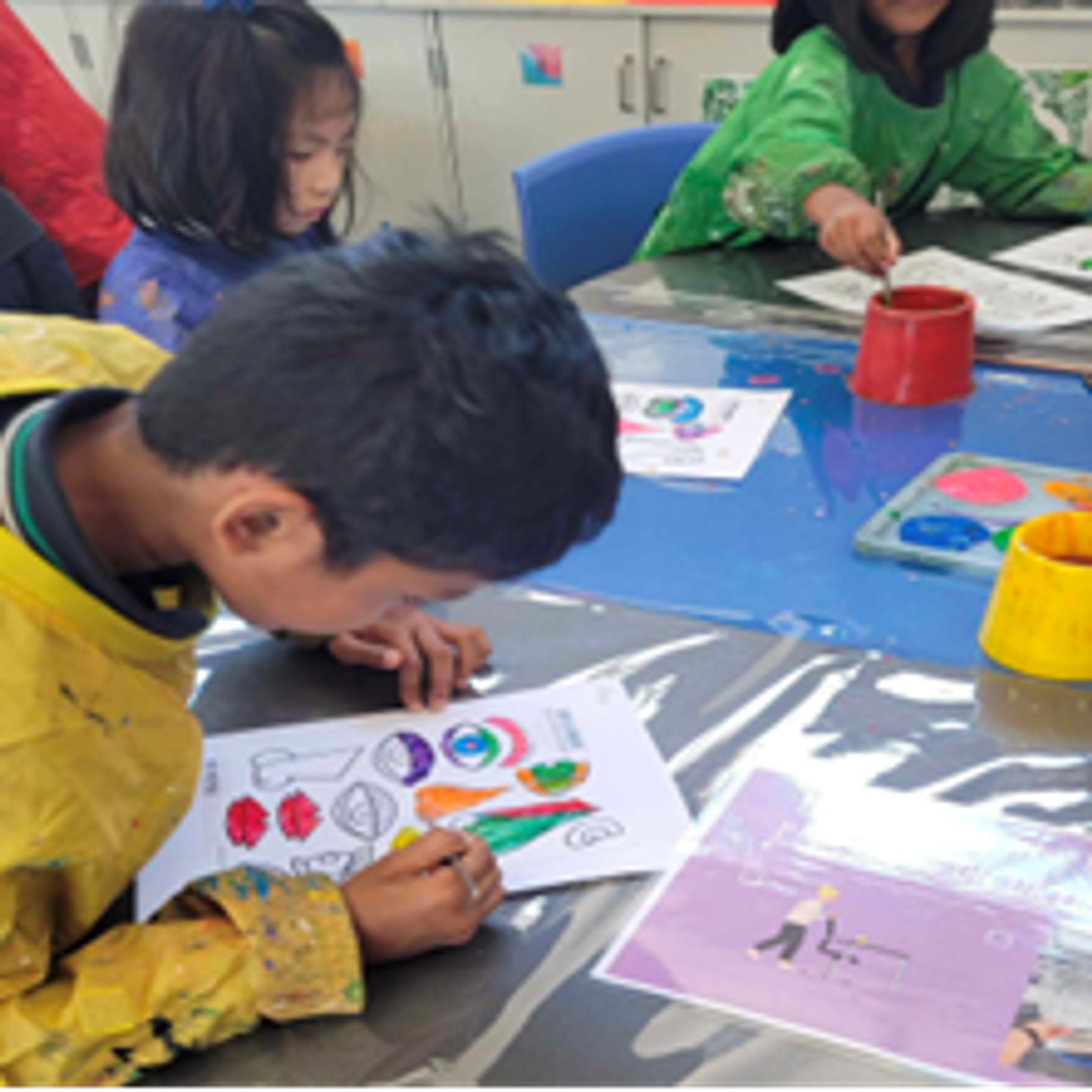
What an exciting start to the year! I hope your time spent with your family over the summer break has been fulfilling and has provided you with memories to last a lifetime. It’s time to embark on another journey of exceptional art education. This term year levels will be exploring a range of materials and techniques, such as sculpturing, painting, drawing and collaging. I eagerly look forward to an exciting and imaginative art period ahead.
Prep
Students in Prep will engage in artistic expression through the use of diverse materials and methods. They will be taught to develop their own original artworks by incorporating personal experiences, concepts, and drawing inspiration from existing pieces of art and literature. Students will specifically use inspiration from Marcus Pfister’s picture story book, ‘The Rainbow Fish’.
Curriculum Links:
Explore ideas, experiences, observations and imagination to create visual artworks (VCAVAE017)
Experiment with different materials and techniques to make artworks (VCAVAV018)
Respond to visual artworks and consider where and why people make visual artworks (VCAVAR020)
Key Vocabulary: Warm Colours, Cool Colours, Watercolour, Oil Pastel,
Year 1
This term, students will study the work of Pablo Picasso and the cubism art movement, and create their own Picasso-inspired mixed media portrait. Honing their skills in painting by applying careful brush strokes and colour mixing, refining their cutting skills, and using art elements of line, shape and colour creatively to reflect Picasso’s artistic style.
Curriculum Links:
Explore ideas, experiences, observations and imagination and express them through subject matter in visual artworks they create (VCAVAE021)
Experiment with different materials, techniques and processes to make artworks in a range of art forms (VCAVAV022)
Create and display artworks to express ideas to an audience (VCAVAP023)
Key Vocabulary: Pablo Piccas, Acrylic Painting, Collaging, Patterns
Year 2
This term, the students will delve into the world of clay, studying different techniques, specifically how to create a slab and use sculpting tools creatively and safely.
They will put their newfound skills to the test by creating a clay flower or leaf sculpture. Additionally, they will develop their painting skills by mixing colours, and applying careful brushstrokes techniques to a 3-dimensional surface.
Curriculum Links:
Explore ideas, experiences, observations and imagination and express them through subject matter in visual artworks they create (VCAVAE021)
Experiment with different materials, techniques and processes to make artworks in a range of art forms (VCAVAV022)
Create and display artworks to express ideas to an audience (VCAVAP023)
Key Vocabulary: Slab-making, Colour Studies, Techniques, Polishing
Year 3
Students in Year Three, will be honing their painting skills, with a canvas project. They will be focusing on mixing tints and shades to create a range of hues and practise unique brushstrokes to match Vincent Van Gogh’s artwork, “The Starry Night”. Students will develop their spatial arrangement in artwork, with a strong focus on the art elements of line, shape, colour and texture.
Curriculum Links:
Explore ideas and artworks from different cultures and times as inspiration to create visual artworks (VCAVAE025)
Explore visual conventions and use materials, techniques, technologies and processes specific to particular art forms, and to make artworks (VCAVAV026)
Identify and discuss how ideas are expressed in artworks from a range of places, times and cultures, including artworks by Aboriginal and Torres Strait Islander peoples (VCAVAR028)
Key Vocabulary: Brushstrokes, Art Elements, Spatial Arrangement
Year 4
The Year Four students will be gaining a deeper understanding of ceramic techniques, through a strong focus on slab-making and layering elements with clay. They will study the surrealism movement, by looking at surrealist artists as inspiration and develop their own artistic surrealist fish out of clay.
Curriculum Links:
Explore ideas and artworks from different cultures and times as inspiration to create visual artworks (VCAVAE025)
Explore visual conventions and use materials, techniques, technologies and processes specific to particular art forms, and to make artworks (VCAVAV026)
Identify and discuss how ideas are expressed in artworks from a range of places, times and cultures, including artworks by Aboriginal and Torres Strait Islander peoples (VCAVAR028)
Key Vocabulary: Surrealism, Salvador Dali, Slab-making, Slip and Score
Year 5
The focus for this term will be honing painting skills, with a large landscape canvas painting project at the forefront. Students will use art tutorials to expand their knowledge of blending, colour mixing to create a variety of shades, tints and tones, and use a variety of different brush stroke techniques appropriately. They will develop problem-solving skills by overcoming challenges that arise.
Curriculum Links:
Explore visual arts practices as inspiration to create artworks that express different ideas and beliefs (VCAVAE029)
Select and apply visual conventions, materials, techniques, technologies and processes specific to different art forms when making artworks (VCAVAV030)
Identify and describe how ideas are expressed in artworks by comparing artworks from different contemporary, historical and cultural contexts, including artworks by Aboriginal and Torres Strait Islander peoples (VCAVAR032)
Key Vocabulary:
Tints, Tones, Blending, Stippling, Wash, Gradient
Year 6
In Year 6, students will focus on developing their drawing skills by choosing a subject of their preference. Specifically, they will enhance their technical abilities by learning to incorporate the art element of tone. Throughout this process, students will explore various shading techniques, including cross-hatching, stippling, blending, and hatching.
Moreover, they will practise creating seamless transitions between different shades to achieve smooth and lifelike representations in their artwork.
Curriculum Links:
Explore visual arts practices as inspiration to create artworks that express different ideas and beliefs (VCAVAE029)
Select and apply visual conventions, materials, techniques, technologies and processes specific to different art forms when making artworks (VCAVAV030)
Create and display artwork considering how ideas can be expressed to an audience (VCAVAP031)
Identify and describe how ideas are expressed in artworks by comparing artworks from different contemporary, historical and cultural contexts, including artworks by Aboriginal and Torres Strait Islander peoples (VCAVAR032)
Key Vocabulary:
Tone, Cross-hatching, Hatching, Stippling, Blending, Stump
Year 3 & 4 Art Innovation
The Art Innovation Program will utilise strategies from the curriculum, and aim to challenge and engage students through collaboration to deepen the development of visual conventions. Students will be exploring and creating face clay sculptures, by focusing on applying a range of hand building techniques, applying correct painting methods and applying safe practices.
How can you support your child’s art learning at home?
- Draw, draw and draw! Drawing is the foundational skill in planning and/or creating artworks. Practise drawing and sketching from different subjects (landscapes, still life objects, portraits etc) and learn from references (taking images or studying objects in real life).
- Learn new skills from tutorials, videos and books that demonstrate a step by step method.
- Encourage your child to read and look at other artworks to give an opportunity to analyse and interpret meanings of artworks. You may ask questions such as, “What do you see?” What colours, lines and textures do you see?” “What is happening?”. This will help build your child's visual literacy.
